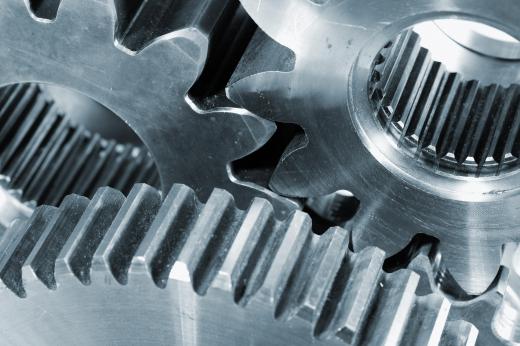Forging is a process used to form metal into large quantities of identical parts. It is often used in the manufacturing process of automobiles and to improve the properties of the metal being used. The products made by forging may be large or very small, and can be made of steel or any other metal. Forging changes the shape and size, but not the volume, of a part.
In the forging process, force is applied to the metal so that it stretches beyond the yield point. The force used in forging must be strong enough to change the material, but not so strong that it breaks it. When the material forms into a new shape, this is called the yield point, and when it breaks, this is called the fracture point.

There are many different machines used in the forging process. A forging press is used to form car wheels, bushings, gears and other parts. It uses hydraulic pressure to exert enough force to press the steel or other metal into the required shape. The press may be positioned either vertically or horizontally.
In forging, a mechanical forging press can also be used. This device stores energy in a motor-driven flywheel. This energy drives a ram through another mechanical device, most often a crank. The ram is significantly lighter than the hammer used in other applications.
The ram used in a mechanical forging press is slower than a hammer and manipulates the metal by squeezing it. Mechanical forging presses may have a force as large as 12,000 tons. Although the device is huge, it cannot forge as complicated or large pieces as the hammers can.
Another form of this equipment is the hydraulic forging press. These presses use high-pressure fluid and are slower than hammers by a factor of about 100. The hydraulic forging press is used for complex die forging. Presses with a force of 50,000 tons are used for forging large airplane parts. There are also larger hydraulic presses with a force of 78,000 tons available in some parts of Europe.
